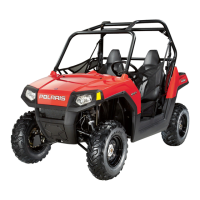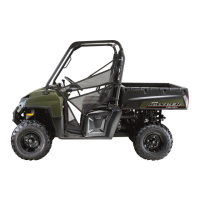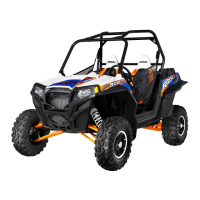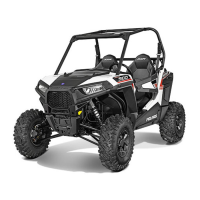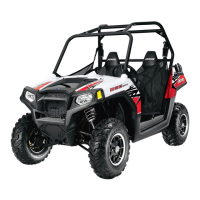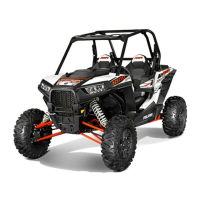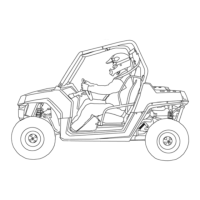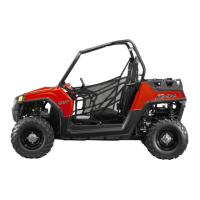WHEELS & TIRES 6 - 6
DIAGNOSIS AND TESTING -
TIRE NOISE OR VIBRATION
Radial-ply tires are sensitive to force impulses
caused by improper mounting, vibration, wheel
defects, or possibly tire imbalance.
To find out if tires are causing the noise or
vibration, drive the vehicle over a smooth road at
varying speeds. Note the noise level during
acceleration and deceleration. The motor and
differential noises will change as speed varies,
while the tire noise will usually remain constant.
REPAIRING LEAKS
For proper repairing, a radial tire must be removed
from the wheel. Repairs should only be made if the
defect, or puncture, is in the tread area (Fig. 2).
The tire should be replaced if the puncture is
located in the sidewall.
Deflate tire completely before removing the tire
from the wheel. Use lubrication such as a mild
soap solution when dismounting or mounting tire.
Use tools free of burrs or sharp edges that could
damage the tire or wheel rim.
Before mounting tire on wheel, make sure all rust is
removed from the rim bead and repaint if
necessary.
Fig 2 Tire Repair Area
1 - Repairable area
ROTATION
Tires on the front and rear operate at different loads
and perform different steering, driving, and braking
functions. For these reasons they wear at unequal
rates and tend to develop irregular wear patterns.
Rotating the tires at 500 miles or as needed. The
benefits of tire rotation are:
• Increase tread life
• Maintain traction levels
• A smooth, quiet ride
The suggested method of tire rotation is (Fig. 3).
Other rotation methods can be used, but they will
not provide all the tire longevity benefits.
Fig. 3 Tire Rotation Pattern
WHEELS
DESCRIPTION
All models use stamped steel wheels. Every wheel
has raised sections between the rim flanges and
rim drop well called safety humps.
Initial inflation of the tire forces the bead over these
raised sections. In case of rapid loss of air
pressure, the raised sections help hold the tire on
the wheel.
The wheel nuts are designed for this specific
application. Do not use replacement nuts with a
different design or lesser quality.
GEM Service Manual November 2007

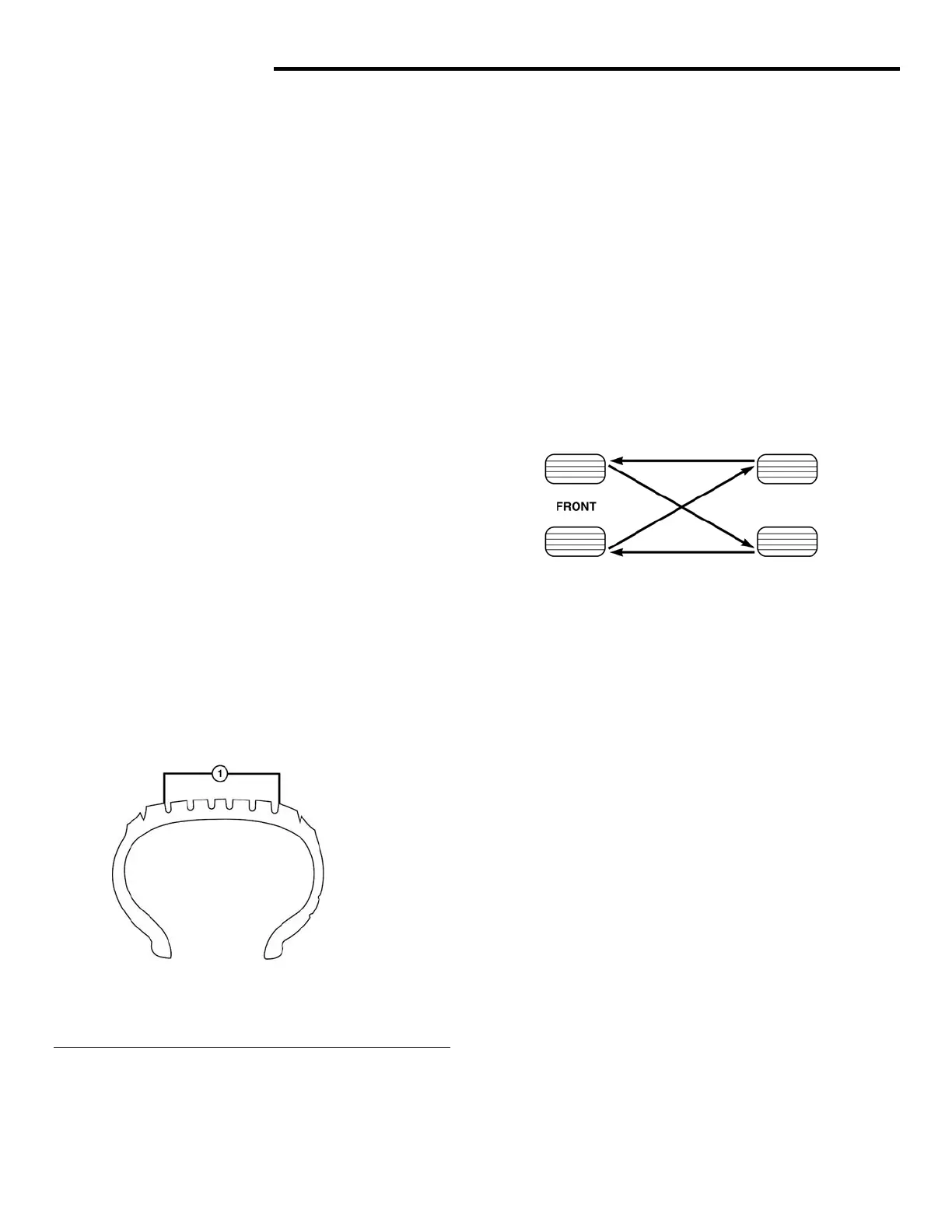